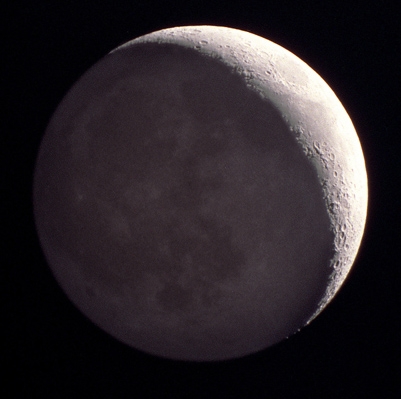Difference between revisions of "February 6, 2004"
| Line 32: | Line 32: | ||
[http://www.randomhouse.com/delrey/sample/earthlight.html <i>Earthlight</i>] by Arthur C. Clark (excerpt)<br> | [http://www.randomhouse.com/delrey/sample/earthlight.html <i>Earthlight</i>] by Arthur C. Clark (excerpt)<br> | ||
[http://science.nasa.gov/headlines/y2002/12apr_earthshine.htm Earthshine] from Science@NASA</p> | [http://science.nasa.gov/headlines/y2002/12apr_earthshine.htm Earthshine] from Science@NASA</p> | ||
| − | <p | + | <p><b>Yesterday's LPOD:</b> [[February 5, 2004|LO III]] </p> |
| + | <p><b>Tomorrow's LPOD:</b> [[February 7, 2004|Crumpled Sheets of Lava]] </p> | ||
</td></tr> | </td></tr> | ||
</table> | </table> | ||
Revision as of 12:42, 1 February 2015
New and Old All Together
Image Credit: Alan Friedman |
|
New and Old All Together The crescent Moon is one of the glories of the solar system. The bright, sun-lit portion of the Moon doesn't yet overwhelm the Earth-lit, gibbous part. In Alan Friedman's remarkable composite rendition of this classic scene there is a strong three-dimensionality - you can almost feel the curvature of the surface. The face of the Woman in the Moon is easily seen, as is bright Aristarchus, which Herschel mistook for an erupting volcano. Along the sunlit side of the terminator the twins Atlas and Hercules are visible in the north (near the top), and south of bifurcated Nectaris is Janssen and friends. Wow! Technical Details: Related Links: Yesterday's LPOD: LO III Tomorrow's LPOD: Crumpled Sheets of Lava |
|
Author & Editor: |
COMMENTS?
Register, and click on the Discussion tab at the top of the page.
Contributions to http://www2.lpod.org/ are licensed under a Creative Commons Attribution No-Derivative-Works Non-Commercial 3.0 License. 




